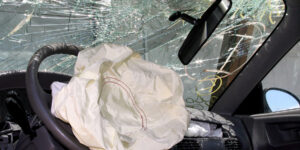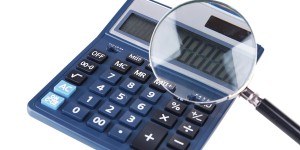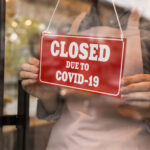One of the most important players in the booming drone industry isn’t a hardware manufacturer; it’s the U.S. Federal Aviation Administration. So attendees at the Consumer Electronics Show (CES) last week flocked to hear a policy update from the FAA, which has begun to regulate drone use more aggressively.

In the two weeks or so since the agency started requiring hobbyists to register drones larger than 0.55 pounds, 181,061 drones had been registered as of Wednesday morning, said FAA Administrator Michael Huerta. The FAA is working to support third-party apps that would allow people to scan a code located on a drone to register it immediately, said Huerta, who’s attending CES for the first time.
The organizers of CES, the world’s largest annual technology conference, estimated that Americans bought 400,000 drones during the past holiday season, so less than half of them were registered with the FAA. The trade group forecasts more than 2.8 million U.S. drone sales in 2016, with about one million of those above the 0.55 pound limit.
Starting on Dec. 21, hobbyists who buy drones have to register on the FAA’s website. Those who already own the devices have until Feb. 19 to register. The FAA expects to finalize rules for commercial drones this spring, Huerta said.
CES is buzzing with drones. The CES organizers said the U.S. market reached $105 million in revenue last year, an increase of more than 50 percent from the year before. For the second consecutive year, a special corner of the exhibit hall was set aside for the flying robots, with 27 companies showing off unmanned aerial systems designed for police officers, real estate agents and disaster relief professionals.
But the proliferation of drones is raising increasing concerns over safety and privacy. No one wants a drunken drone operator to damage the White House or a device to fall from the sky and crush a competitive skier on live television. A study recently released by Bard College found that from December 2013 to September 2015, 158 incidents were reported of a drone coming within 200 feet of a manned aircraft. In 28 cases, a pilot had to maneuver to avoid colliding with a drone. Registration with the federal government is designed to hold drone operators accountable.
To alleviate fears about people spying on areas they shouldn’t be or putting planes at risk, the FAA maintains a list of do-not-fly zones for drones. The FAA said on Wednesday it released an app for Apple devices, along with a beta version for Android, called B4UFLY, which tells drone owners where it’s OK to fly. The U.S. restricts drone use near airports and other places.
“We are on the cusp of democratizing the airspace,” David Vos, who works on drones at Google X, said on stage at the FAA event. “In order to do that, there’s a tremendous amount of responsibility to be built.”
Some drone companies and advocates grumble that the FAA’s rules have gone too far, though they said it won’t force them to change the way they do business. Henri Seydoux, the chief executive of French drone company Parrot, said he doesn’t think the U.S. approach is particularly onerous. “In the end, I don’t believe regulations will be all that different in other countries,” he said.
Parrot has taken a slightly different approach at this year’s show from its main competitor, Chinese drone company DJI. Parrot revealed a new drone that relies heavily on autopilot to make it easy for a novice to control, while DJI played up new camera systems designed to appeal to professional photographers.
Last month, DJI also announced several changes to the software it uses to keep drones from operating in restricted areas. The company is accessing the FAA’s temporary flight restriction database to alert operators when they stray into unsafe areas. But it is also loosening restrictions that kept people from turning on their drones’ motors in such areas. Now people who have registered their devices with the company can override this prohibition. Brendan Schulman, vice president of policy and legal affairs at DJI, said the change accommodates people with a legitimate reason to operate.
These moves are designed to dampen enthusiasm for a proposal by Senator Charles Schumer (D-N.Y.) to require manufacturers to develop technology that would keep drones from operating in such areas. Critics of this approach say blanket restrictions go too far while also shifting liability away from drone operators themselves, which could encourage reckless behavior. “We have a balanced approach that is far better than any legislation,” said Schulman.
One thing DJI and Parrot have in common is that many of their drones are heavy enough to require federal registration. Drones heavier than 0.55 pounds are the norm at CES this year, said Rich Hanson, the director of government and regulatory affairs for the Academy of Model Aeronautics, a hobbyist group that pushed unsuccessfully for a higher weight limit with the FAA. “Most everything you’ll see there rightfully should be registered,” he said.





















 NC Supreme Court Bucks Trend, Finds COVID Caused Physical Loss to Restaurants
NC Supreme Court Bucks Trend, Finds COVID Caused Physical Loss to Restaurants  Should CEOs Zip Their Lips About Controversial Issues?
Should CEOs Zip Their Lips About Controversial Issues?  What’s Not Changing in 2025: Homeowners Outlook, Re Retentions
What’s Not Changing in 2025: Homeowners Outlook, Re Retentions  Senate Says Climate Is Causing Insurance ‘Crisis’; Industry Strikes Back
Senate Says Climate Is Causing Insurance ‘Crisis’; Industry Strikes Back 

